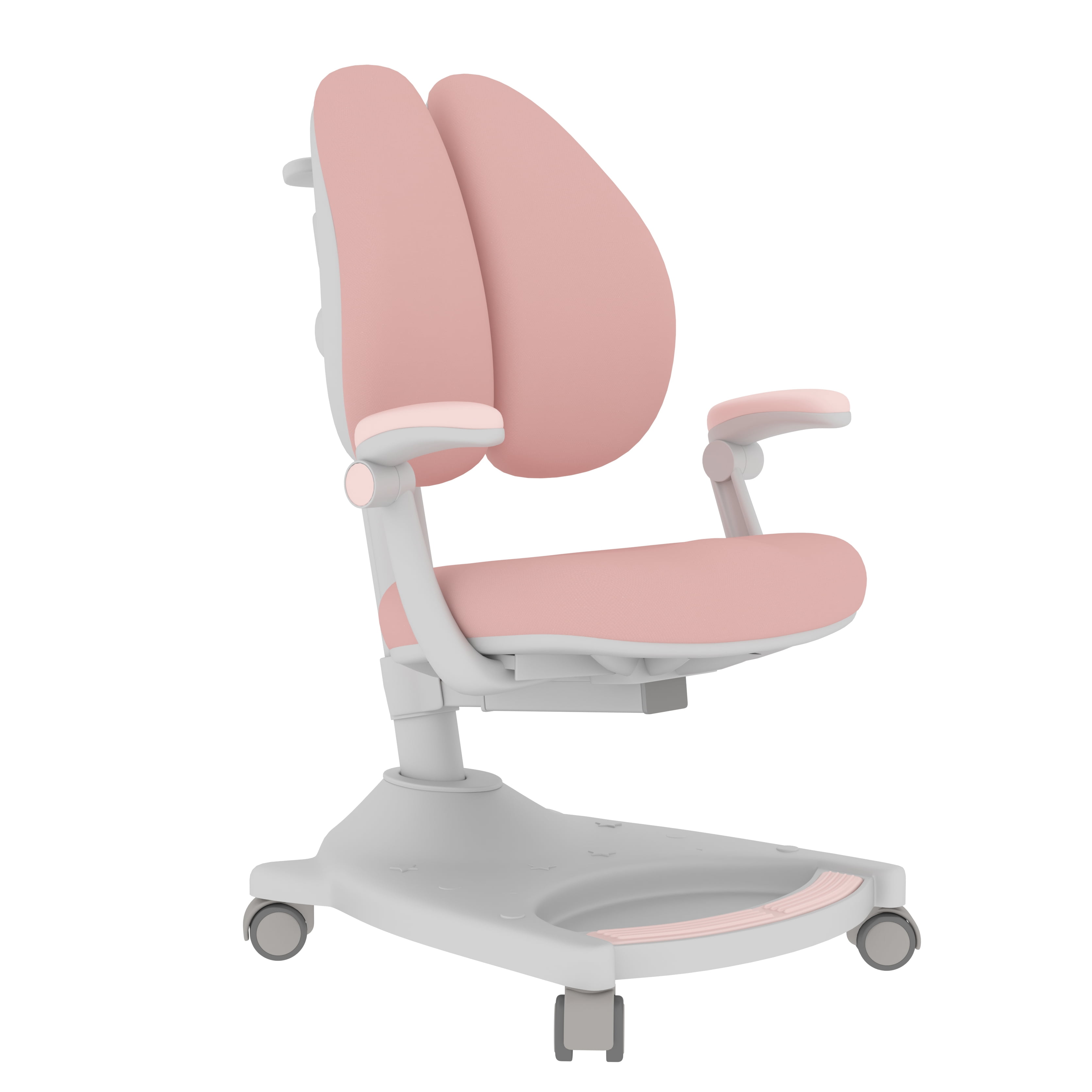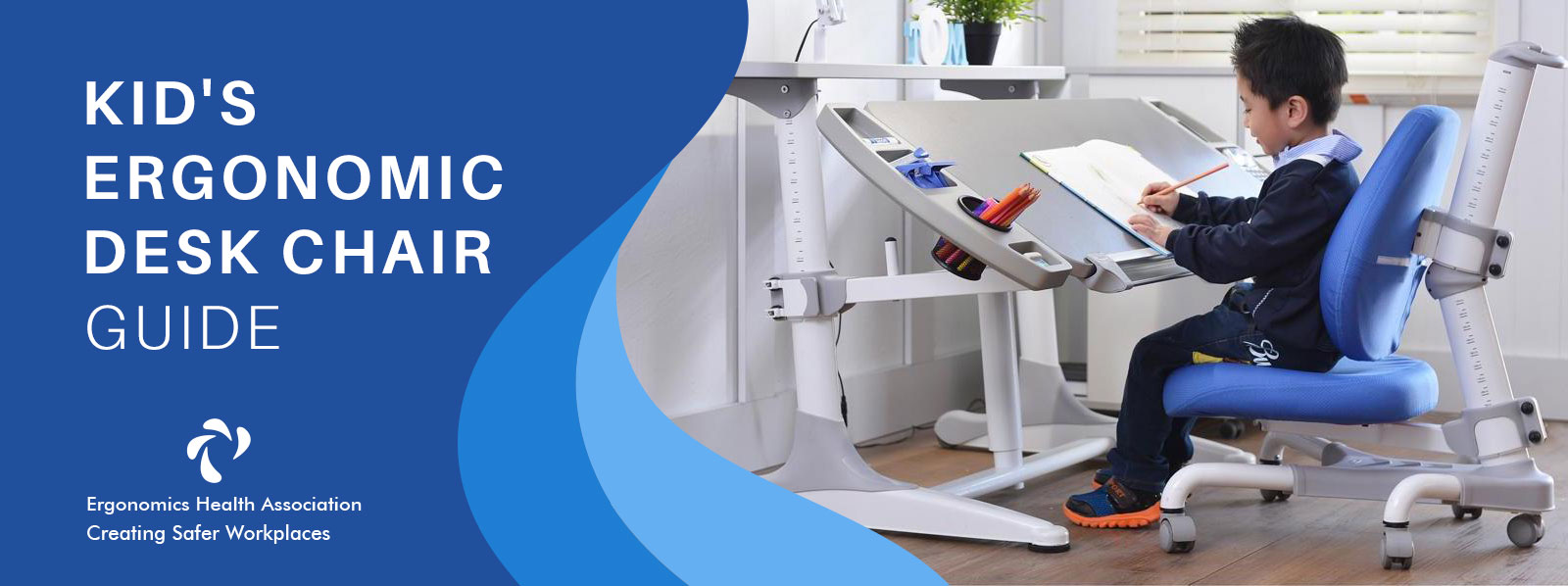Benefits of Ergonomic Chairs for Children

Ergonomic chairs offer significant advantages for children’s health and development, particularly during their crucial growth years. Investing in proper seating can prevent future back problems and promote healthy posture habits that will benefit them throughout their lives. The impact extends beyond just comfort; it’s about fostering a supportive environment for their physical well-being and academic performance.
Long-Term Health Benefits of Ergonomic Chairs for Children
Proper posture and back health are paramount during childhood and adolescence, as the skeletal system is still developing. Using an ergonomic chair can significantly mitigate the risks associated with poor posture and promote long-term spinal health.
- Improved Posture: Ergonomic chairs provide adjustable features allowing children to maintain a neutral spine, reducing the risk of developing scoliosis, kyphosis, or lordosis.
- Reduced Back Pain: Proper support from an ergonomic chair minimizes strain on the back muscles, preventing discomfort and potential chronic back pain later in life. This is particularly important during periods of prolonged sitting, such as schoolwork or homework.
- Enhanced Concentration and Focus: When children are comfortable and supported, they can focus better on their tasks. Discomfort from poor posture can be a significant distraction, leading to reduced concentration and academic performance.
- Prevention of Future Health Issues: By establishing healthy postural habits early on, children are less likely to develop serious musculoskeletal problems in adulthood, such as chronic back pain, neck pain, and carpal tunnel syndrome.
Comparison of Ergonomic and Standard Chairs for Children’s Development
The following table highlights the key differences between ergonomic and standard chairs and their impact on a child’s development.
| Feature | Ergonomic Chair | Standard Chair | Impact on Child’s Development |
|---|---|---|---|
| Posture Support | Provides adjustable lumbar support and encourages a neutral spine. | Offers minimal or no lumbar support, often leading to slouching. | Ergonomic chairs promote healthy posture, reducing the risk of spinal problems. Standard chairs can contribute to poor posture and back pain. |
| Adjustability | Height, seat depth, and armrest adjustments accommodate growth spurts. | Fixed dimensions, often unsuitable for varying body sizes. | Adjustability ensures the chair remains comfortable and supportive as the child grows. Fixed chairs may become uncomfortable and lead to poor posture. |
| Comfort | Designed for comfort and prolonged use, reducing fatigue and restlessness. | May be uncomfortable after prolonged use, leading to fidgeting and distraction. | Comfort enhances concentration and reduces physical discomfort, improving academic performance. Discomfort can lead to distraction and poor performance. |
| Long-Term Health | Promotes healthy spinal development and reduces the risk of future musculoskeletal problems. | May contribute to poor posture, back pain, and other long-term health issues. | Ergonomic chairs lay a foundation for long-term health and well-being. Standard chairs may negatively impact health in the long run. |
Ergonomic Chair Features and Growing Children
Ergonomic chairs are specifically designed to adapt to a child’s changing body. Features like adjustable height and lumbar support are crucial for addressing the needs of growing children. Adjustable height ensures the chair can accommodate increasing leg length, maintaining proper foot placement on the floor. Lumbar support provides crucial back support, preventing slouching and promoting a healthy spinal curvature.
Ergonomic desk chair kids – Illustration of Correct Positioning: Imagine a child sitting in an ergonomic chair. Their feet are flat on the floor, their knees are bent at a 90-degree angle, and their back is straight against the chair’s backrest. The chair’s lumbar support gently curves inwards, providing support to the lower back and preventing slouching. Their arms rest comfortably on the armrests, ensuring their shoulders are relaxed and their elbows are at a 90-degree angle when typing or writing. The overall posture is relaxed yet upright, promoting proper spinal alignment and minimizing strain.
Ergonomic Chair Setup and Usage: Ergonomic Desk Chair Kids

Proper ergonomic chair setup is crucial for children’s health and well-being, impacting posture, comfort, and concentration during study or playtime. A correctly adjusted chair minimizes strain and promotes healthy physical development. This section provides a step-by-step guide to setting up an ergonomic chair and addresses common setup mistakes.
Step-by-Step Guide to Ergonomic Chair Setup for Children, Ergonomic desk chair kids
Setting up an ergonomic chair correctly for a child requires attention to detail and considers the child’s individual size and needs. The following steps will help ensure optimal posture and comfort.
- Seat Height Adjustment: Adjust the chair’s height so the child’s feet are flat on the floor. Their thighs should be parallel to the floor, and their knees should be bent at a 90-degree angle. If the child’s feet don’t reach the floor, use a footrest.
- Backrest Adjustment: Ensure the backrest supports the child’s lower back’s natural curve. The lumbar support should fit snugly against the curve, preventing slouching. Adjust the backrest angle for optimal comfort, typically around 100-110 degrees.
- Armrest Adjustment (if applicable): If the chair has armrests, adjust them so the child’s elbows are bent at a 90-degree angle while their forearms rest comfortably on the desk. Armrests should not interfere with the child’s posture or ability to move freely.
- Seat Depth Adjustment: Adjust the seat depth so there’s about two to three finger-widths of space between the back of the child’s knees and the edge of the seat. This prevents pressure on the back of the knees and promotes good circulation.
- Regular Adjustments: As children grow, the chair will require regular adjustments to maintain proper ergonomic support. It’s important to check and adjust the chair’s settings periodically.
Common Mistakes in Setting Up Children’s Ergonomic Chairs and Solutions
Parents often make mistakes when setting up children’s ergonomic chairs. Understanding these common errors and their solutions is crucial for maximizing the chair’s benefits.
| Mistake | Solution |
|---|---|
| Ignoring proper seat height, leading to leg dangling or knees higher than hips. | Adjust the chair height so the child’s feet are flat on the floor, and their thighs are parallel to the floor. Use a footrest if necessary. |
| Neglecting lumbar support, causing slouching and back pain. | Ensure the backrest supports the child’s lower back’s natural curve. Use a lumbar support pillow if necessary. |
| Improper armrest adjustment, hindering posture or movement. | Adjust armrests so the child’s elbows are bent at 90 degrees while their forearms rest comfortably on the desk. If armrests cause discomfort or hinder movement, consider removing them. |
| Failing to adjust the chair as the child grows. | Regularly check and adjust the chair’s settings to maintain proper ergonomic support as the child grows. |
| Using an adult-sized chair for a child. | Purchase a chair specifically designed for children, or use a chair with adjustable features that can accommodate a child’s size. |
Incorporating an Ergonomic Chair into a Child’s Workspace
Integrating an ergonomically set-up chair into a child’s workspace is essential for promoting healthy habits. The workspace should be arranged to complement the chair, minimizing strain and maximizing comfort.
Imagine a workspace with a desk of appropriate height for the child. The child sits in their ergonomically adjusted chair, their feet flat on the floor, and their back supported by the chair’s backrest. The desk is positioned to allow the child to maintain a neutral posture, with their elbows bent at 90 degrees while typing or writing. The monitor or laptop screen is positioned at eye level to prevent neck strain. Adequate lighting illuminates the workspace, reducing eye strain. The desk is organized and clutter-free to allow for smooth and comfortable movement. A small plant or a personal item is added to personalize the space. The overall effect is a clean, well-lit, and comfortable environment that supports both focus and healthy posture.
